At rush hour, crowds swell at Tsim Sha Tsui MTR station, creating some of the worst (foot) traffic jams in the city. But, walk just 10-minutes away from all that, in the direction of Kimberley Street, and you’ll hit a simple, unassuming shoji door — one of those traditional, ultra-minimalist Japanese doors featuring natural wood lattice against translucent paper.
This small and intimate izakaya — it’s 510 square feet — opened just a few weeks ago. It first came on our radar when we heard that they’d be offering full meals for as little as HK$288 per person. For anyone who has eaten at non-ramen, non-corner shop sushi Japanese restaurants, a price tag like at a proper sit-down joint seemed too good to be true.
First, a quick primer on yakitori for those who aren’t yet acquainted with it. Yakitori literally translates to “grilled chicken” and involves skewering meat or vegetables, seasoning it with either salt or a thick sweet soy sauce called tare, and cooking them over a charcoal fire that imparts a nice, earthy, smoky flavor.

Once we got in, we got to suss out the pricing on each set meal menu.
There’s an 18-course omakase menu, which is comprised of a sampling appetizer, six meat skewers, six vegetable skewers, a simmered dish, soup, grilled dish, seasonal seafood, and rice — and that will set you back an eye-watering HK$688 per person.
Then, there’s a slightly cheaper omakase set for a 13-course menu at HK$428 per person. The cheapest, that HK$288 option that first caught our attention, includes nine courses that includes vegetable and meat skewers, a simmered dish, and soup.
We went with the top-shelf omakase option, the 18-course.
Mokutan specializes in omakase menus, wherein the chef picks the dishes you’ll be getting, based on what he/she thinks is best to offer. This kind of dining experience can be a bit of a gamble because you don’t know what will be coming throughout the course of the meal — you only find out as each course arrives, ready to eat. The staff will ask you beforehand if there’s anything you don’t want, like organ meat, or that you’re allergic to, such as nuts.
We looked at the menu, noted one or two items that we would be up for trying — the chicken hearts, for instance — ordered some plum wine and sake for the table, and waited to see what they would bring us.
First off was a platter of non-grilled snacks, which included chicken liver (yum) and some cucumber to whet our appetite.
Then the first round of skewers arrived: chicken cartilage, jade melon (a bit like a zucchini), chicken, and green shishito pepper (a bit like okra). It was all well-seasoned and tasty, and the vegetables added a welcome bit of juiciness to the otherwise meaty start.
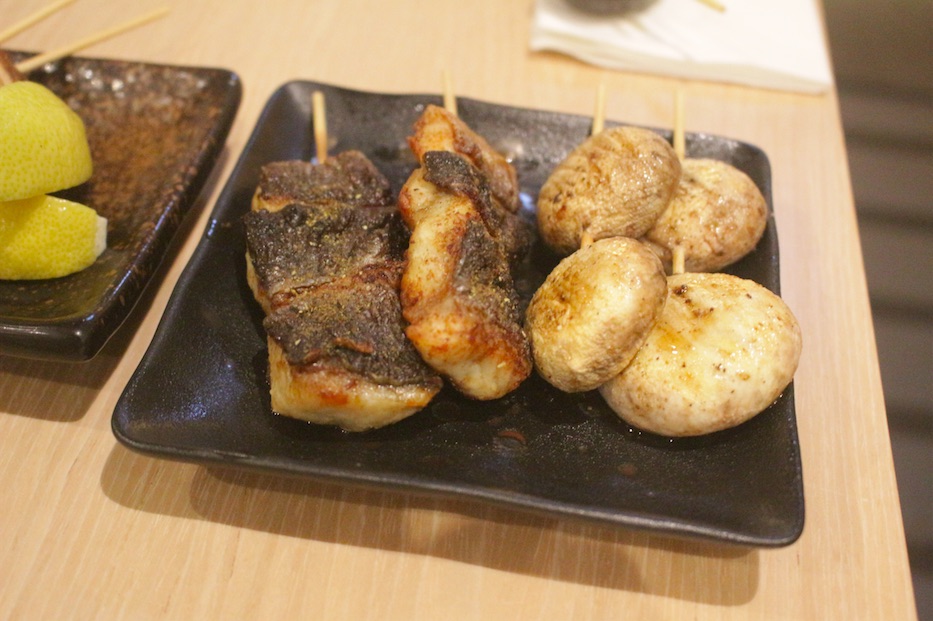
Another item that stood out for us was the cod and mushrooms on skewers — these go great with a squeeze from the lemon wedge provided, and that’s all you really need. It’s a sign of yakitori done well that none of the skewers we had up to this point needed any additional seasoning outside of the dipping salt that was provided.
We were also served with a plate of grilled mushroom stalks, a part of the mushroom that is always overlooked and often discarded, yet has just as much flavor as the mushroom cap. Mokutan seasons theirs with a light dusting of a very nutty powder that really adds an extra dimension to that earthy mushroom flavor.
We had indicated to the wait staff that we were open to trying some organ meat, such the chicken hearts — but when it arrived at the table, we were a bit surprised with how dry and sinewy it looked.

They were mildly disappointing — a bit of a more of a drier texture than the chicken hearts that we had eaten before. Nevertheless, we did like the seasoning. There was a vague hint of spice, and for those who don’t have a frame of reference for chicken hearts, it still makes for an OK introduction to this meat.
We were told that the chicken — hearts and all — came from chickens flown all the way over here from Kagoshima. Other items that deserve a shout out include the grilled pork, tender, juicy, and your tastebuds are hit by a noticeably smoky meat aroma as you sink your teeth into it.
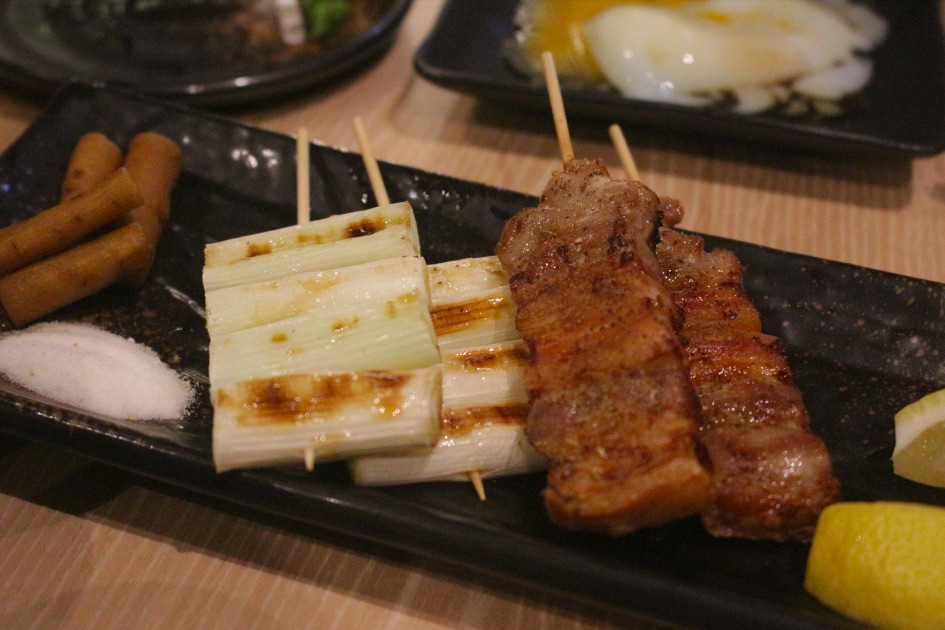
Then, a hot teapot brimming with miso soup arrived — and it was just what we needed.
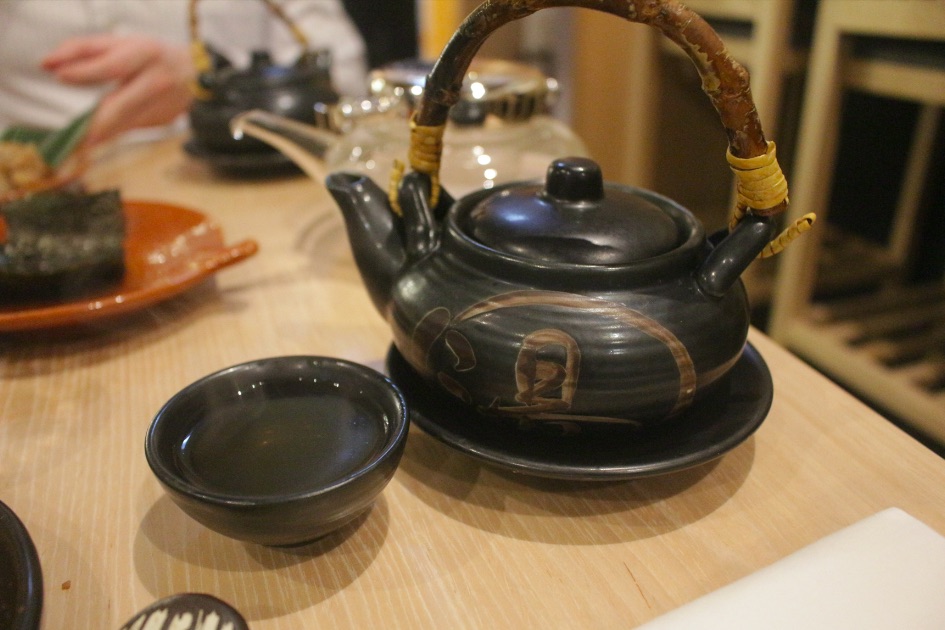
How good was this soup? It was so good that we were practically shaking the teapot to collect every last drop we could get out of it.
There’s a very strong, earthy miso flavor that just feels like you’re getting a belly hug, and each serving of soup comes with a wedge of lemon that you can squeeze into the soup, which really rounds out the flavor — there’s a nice. zesty lemon edge to the soup when you reach the last few drops.
Mokutan’s also doing plenty of non-skewered items, too — namely, a pork knuckle dish, onigiri, and grilled fish.

The pork knuckle was nice, but could be an immediate hit-or-miss, as it’s quite fatty. There’s a lot of chewing around the bone, too, so if you don’t like chicken feet, you probably wouldn’t enjoy the gnawing action involved in this one, either. If you do like chicken feet, then hey, go to town on these.
We moved on to the bonito and mentaiko onigiri — bonito fish and pollock roe rice balls that have been grilled on all sides. The onigiri tasted slightly smoky, toasted, and had a wonderfully savory fish flavor. At first bite, we had what can only really be described as a “Ratatouille moment” where we actually felt like we were in Japan, and namely because the onigiri had a flavor that could only be described as “distinctively Japanese.”
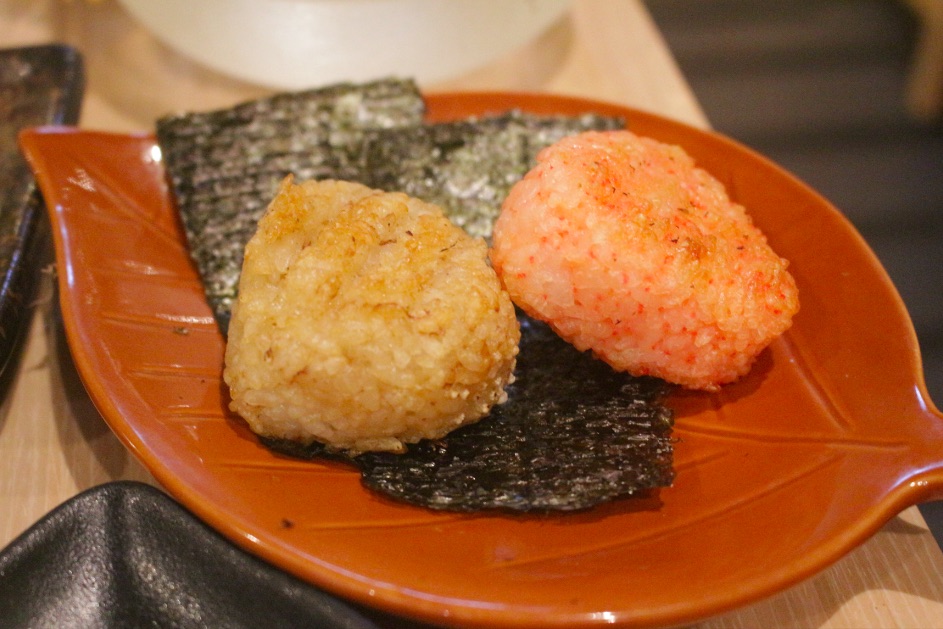
Mokutan’s signature fish dishes are the grilled threadfin and grilled water eel, which were smoky, tender and flaky. It was nice to have a noticeably lighter seafood dish to finish up a very meaty meal.
With just 26 seats inside this small restaurant, it’d definitely be prudent to make a reservation before trying to head in for a meal. And, it’s definitely more ideal for gatherings of between two to four people. It makes a great date place, too, since the plates are for sharing and the omakase-style dining leaves the guesswork out of ordering what’s “best”.
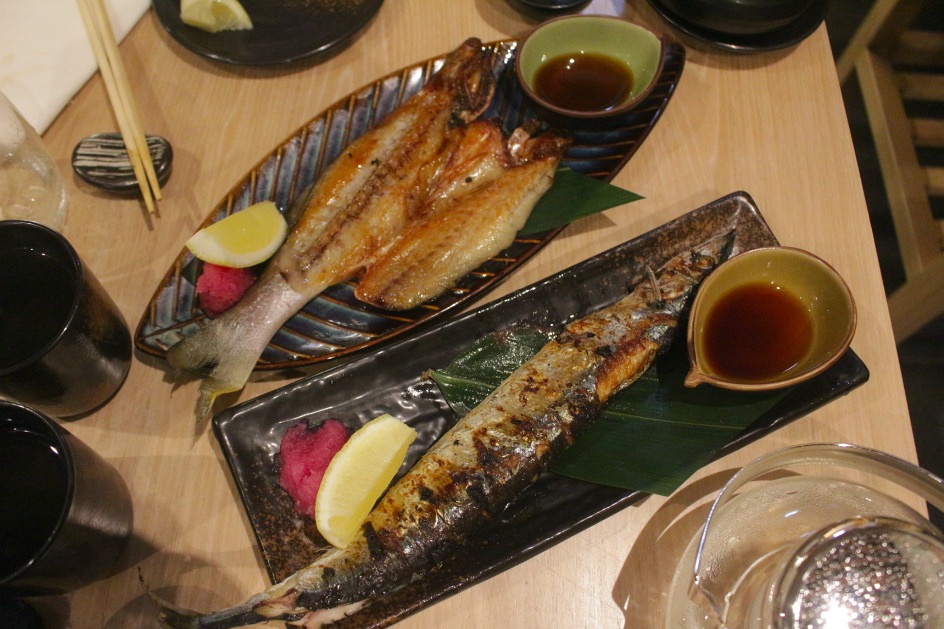
Back to that issue of price — Mokutan’s set meals, like a lot of Japanese restaurants in Hong Kong, do sit within the hundreds range.
On reflection, we were comfortably full after about nine courses, and when we cast our minds back to meals we’ve had that cost more than HK$500 per person, this was undoubtedly one of the best experiences we’ve had.
We would definitely go again, but we may spend a little less.
FIND IT:
Mokutan is at Shop 2, G/F Empire Prestige, 8 Kimberley Street, Tsim Sha Tsui.
Reservations: +852 2708 2009 and MOKUTANhk@gmail.com
Mon-Sun, 12pm to 3pm and 6pm to 10:30pm
MTR: Tsim Sha Tsui (approx. 10 minute walk)
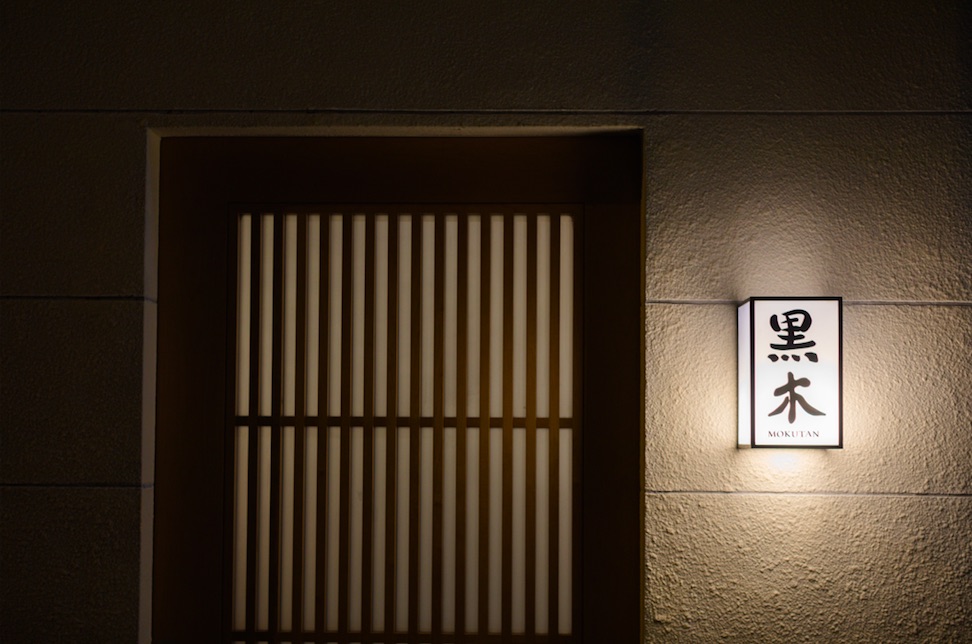





Reader Interactions